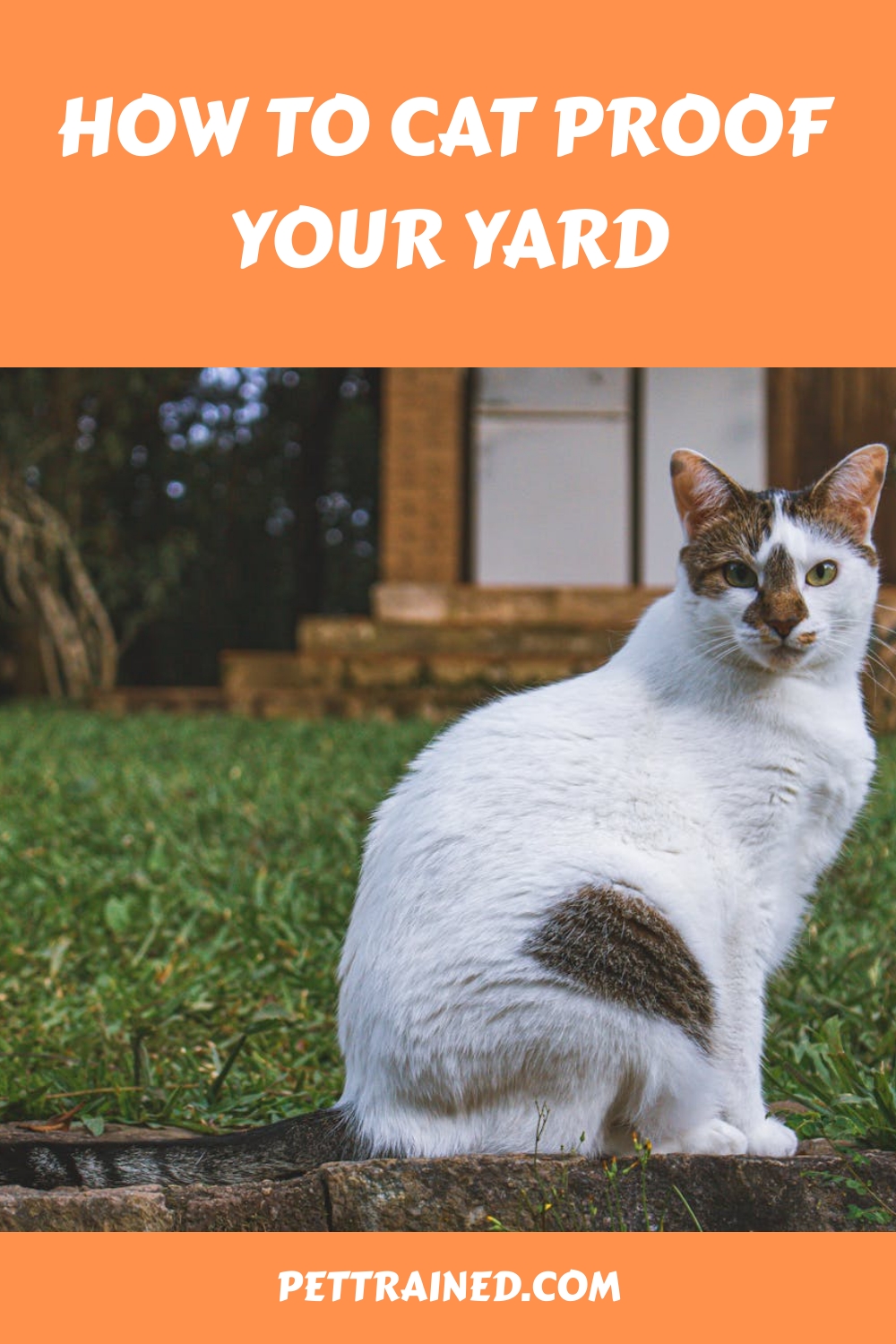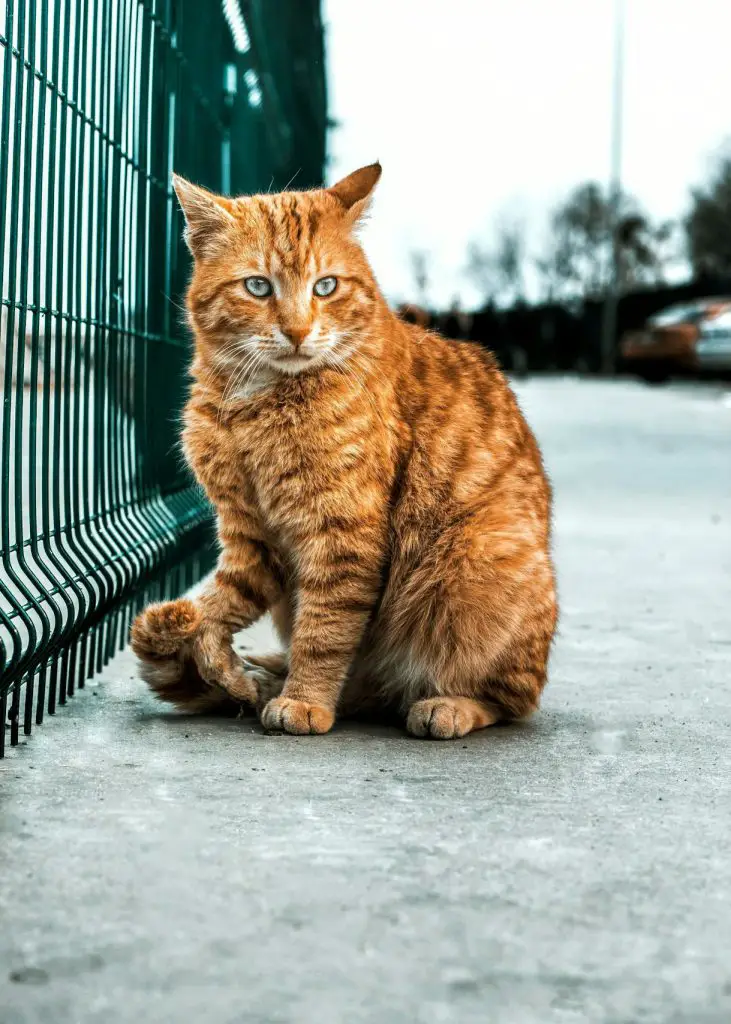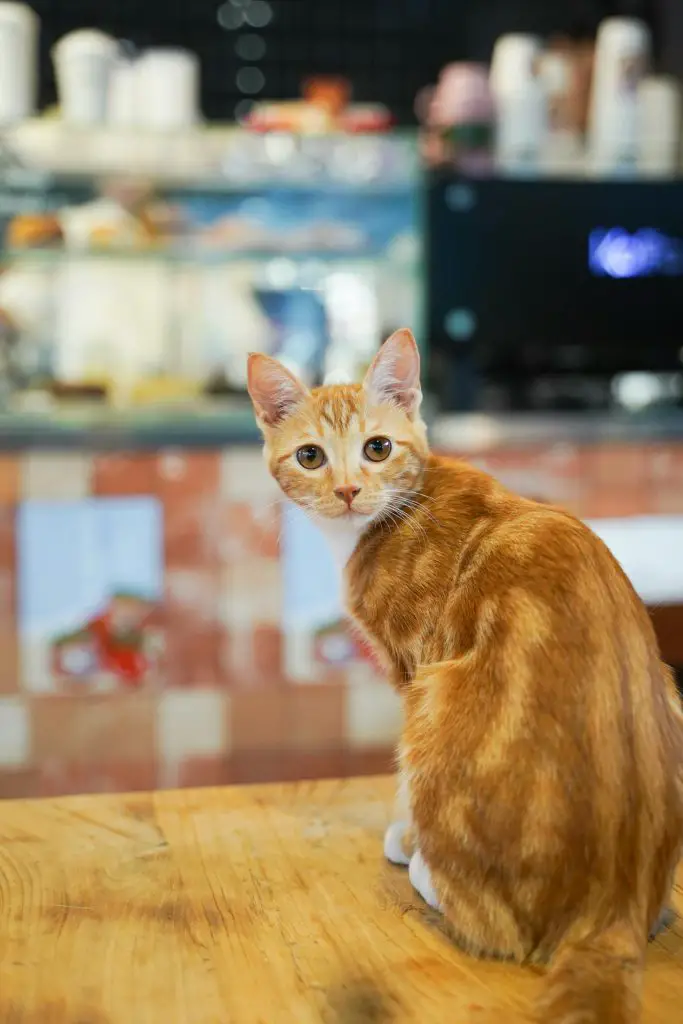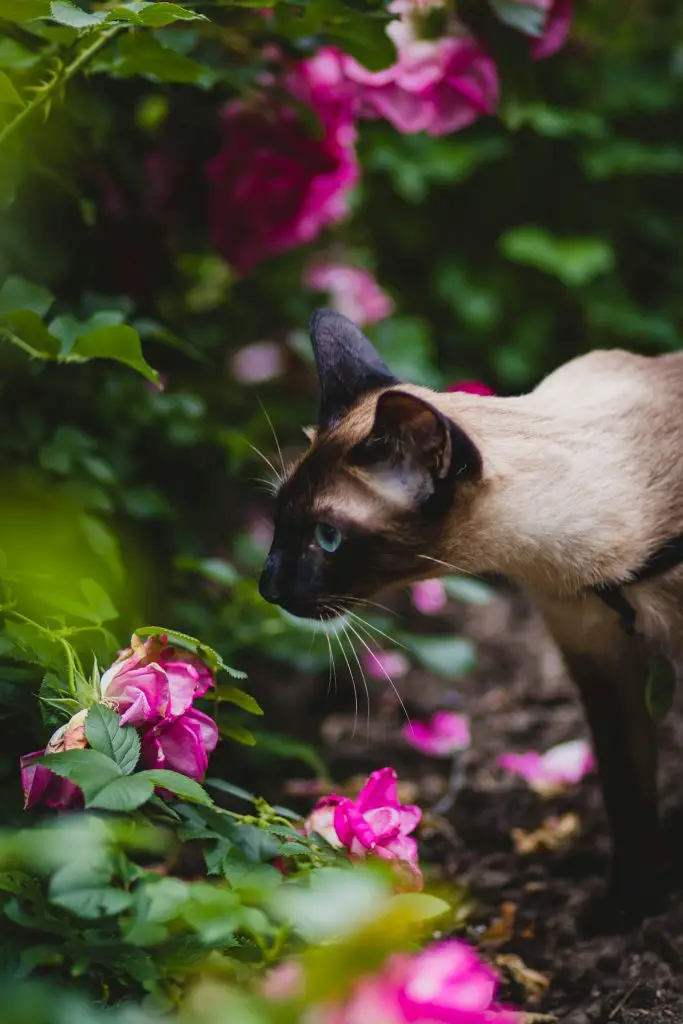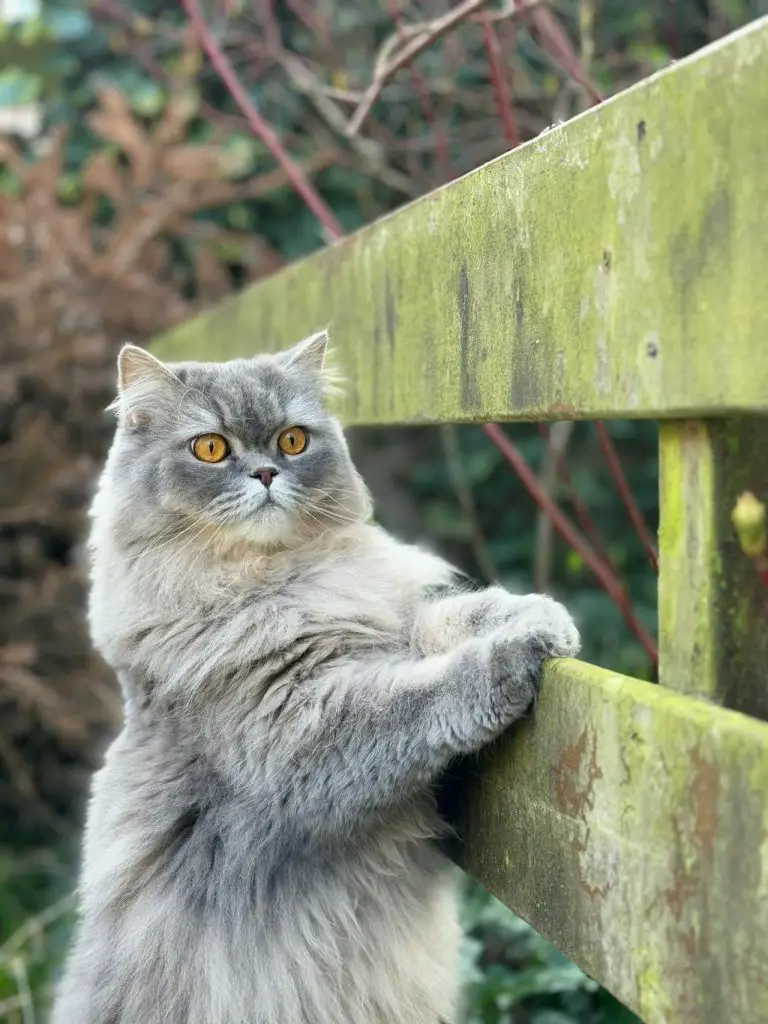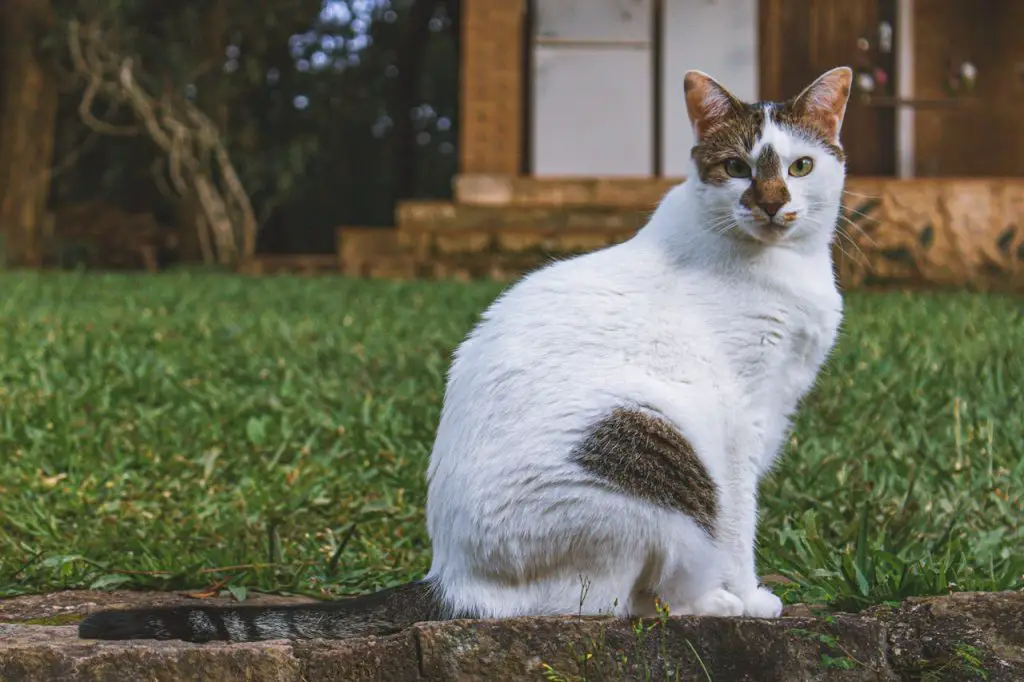
To cat-proof your yard, you need to install cat-friendly fencing or netted enclosures with materials like heavy-duty mesh and galvanized steel to prevent climbing and escapes. Secure gates with advanced lock mechanisms and create natural barriers using non-toxic plants.
Guarantee there’s no access to toxic plants or hazardous chemicals. Provide shaded areas with tall shrubbery and UV-resistant awnings to protect from the sun. Incorporate weather-resistant climbing structures for physical and mental stimulation. Fresh water sources must be placed throughout the yard in ceramic or stainless-steel bowls.
By following these methods, you can create a safe outdoor haven for your cat.
Table of Contents
Key Takeaways
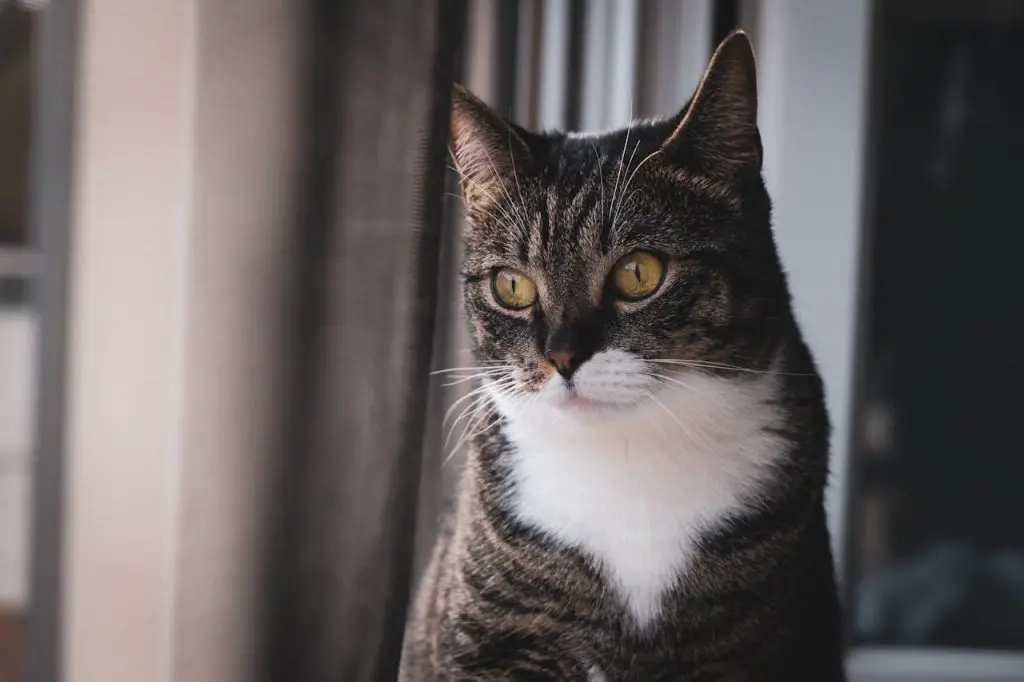
- Install cat-friendly fencing with materials like mesh or vinyl-coated wire to prevent escapes.
- Use tall fences and angled extensions to deter climbing or jumping.
- Secure gates with advanced lock mechanisms and consistent security materials.
- Remove toxic plants and hazardous chemicals to ensure a safe environment.
Install Cat-Friendly Fencing
Installing cat-friendly fencing is essential to guarantee your feline’s safety while allowing them to enjoy the outdoors.
To effectively prevent cat escapes, you need to take into account specific fencing materials and designs tailored to feline behavior.
This post contains affiliate links. However all the information provided on this site are my own honest opinions. See more in Disclaimer.
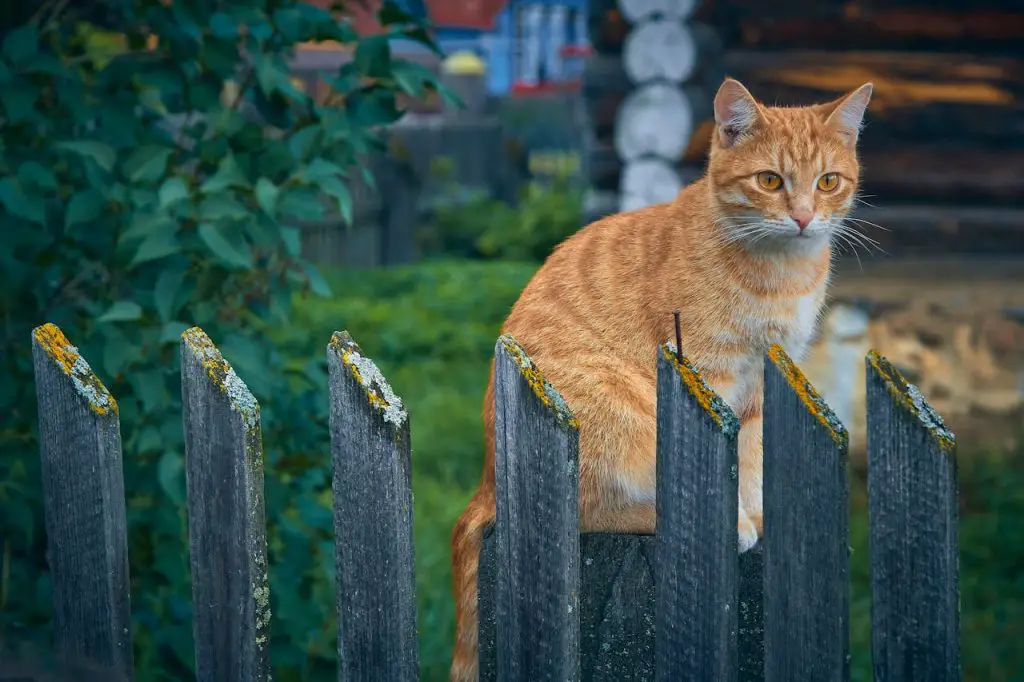
Cats are adept climbers and jumpers, so your fencing solution must account for these capabilities.
You’ve got several fencing materials options to enhance cat escape prevention.
Mesh fencing, for example, is a practical choice. It’s durable and can be installed at a height that deters climbing.
Another option is cat-proof netting, which can be added to existing fences to create a barrier that cats find challenging to navigate.
Vinyl-coated wire is also effective. It’s strong and weather-resistant, ensuring longevity while preventing your cat from squeezing through gaps.
Additionally, you might explore the installation of cat containment systems that include inward-leaning tops or rollers, both of which make it difficult for cats to gain the necessary leverage to scale the fence.
Also See:
Secure Gates and Entrances
To effectively secure gates and entrances, you’ll need to take into account advanced lock mechanisms that prevent your cat from pushing through or manipulating them.
Implement heightened barrier solutions to guarantee your cat can’t climb or jump over.
This approach will greatly reduce escape risks and enhance your yard’s overall safety.
Lock Mechanism Options
Securing gates and entrances with robust lock mechanisms is imperative to prevent your cat from escaping the yard. Sliding bolts provide a simple yet effective solution for securing gates.
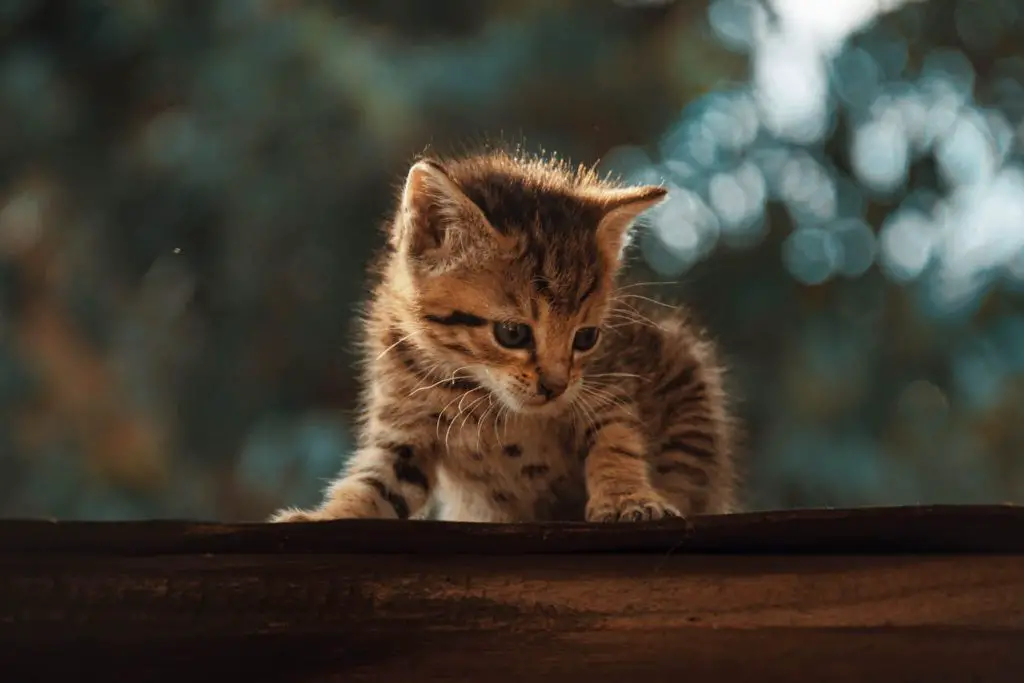
By installing a sliding bolt on your gate, you create a physical barrier that your cat can’t easily manipulate.
Verify the bolt is positioned high enough to be out of reach of curious paws but still convenient for you to use.
Electronic locks offer a more advanced option for securing your yard. These locks can be integrated with keypads or smartphone applications, allowing you to control access remotely.
Electronic locks are particularly beneficial if you have multiple gates or frequently use your yard for other purposes.
They provide an additional layer of security by requiring a code or digital key to access, making it nearly impossible for your cat to tamper with the mechanism.
Both sliding bolts and electronic locks contribute to a thorough strategy for cat-proofing your yard. By selecting the appropriate lock mechanism, you enhance the overall security of your yard.
Prioritizing secure gates and entrances is essential for effective animal welfare within your property.
Heightened Barrier Solutions
Heightened barriers, such as tall fences and netted enclosures, are vital for preventing your cat from climbing or jumping over gates and entrances.
Implementing secure gates and entrances requires careful consideration of barrier materials and fence extensions.
These additions can be critical in guaranteeing your yard remains a safe haven for your feline friend.
Fence extensions, particularly those angled inwards or equipped with rolling mechanisms, can greatly deter your cat from scaling the barriers.
Materials like galvanized steel or heavy-duty mesh are recommended due to their durability and resistance to wear.
It’s essential to make sure that all entrances and gates are fortified with similar materials to maintain consistency in security.
Here’s a breakdown of effective barrier solutions:
| Barrier Type | Recommended Material |
|---|---|
| Fence Extensions | Galvanized Steel |
| Netted Enclosures | Heavy-Duty Mesh |
| Secure Gates | Reinforced Metal |
| Entrance Barriers | Weatherproof Fabric |
These solutions are not only practical but also promote animal welfare by providing a secure environment.
By employing these barrier materials and techniques, you’ll effectively cat-proof your yard, minimizing the risk of your cat escaping or encountering potential hazards.
Choose Safe Plants
When selecting plants for your yard, prioritize species that are non-toxic to cats to guarantee their safety and well-being.

Choosing non-toxic flowers such as marigolds, sunflowers, and zinnias can create a vibrant, cat-friendly environment.
These varieties not only enhance the aesthetic appeal of your garden but also ascertain that your feline friends aren’t exposed to harmful substances.
Trending in Dogs:
Incorporate cat-safe herbs like basil, cilantro, and rosemary into your planting scheme. These herbs aren’t only safe for cats but can also provide culinary benefits for your household.
Catnip, in particular, can serve a dual purpose: it’s harmless and can act as an enriching stimulant for your pet.
Additionally, ground covers like creeping thyme or sweet woodruff can offer safe, non-toxic options for filling in gaps while maintaining an attractive landscape.
Always cross-reference plant species with reputable veterinary resources to confirm their safety.
Implementing these measures ascertains a harmonious balance between a beautiful garden and a protective environment for your cats.
Remove Toxic Hazards
After confirming that your yard features only non-toxic plants, the next step involves meticulously removing any toxic hazards that could jeopardize your cat’s health.
Start by identifying and eliminating any toxic plants that may have inadvertently found their way into your garden.
Common culprits include lilies, azaleas, and oleanders. Consult a detailed list of toxic plants to verify none are overlooked.
Next, address hazardous chemicals. Pesticides, herbicides, and fertilizers can pose considerable risks to your feline friend.
Opt for pet-safe alternatives or natural pest control methods like introducing beneficial insects. Always store these chemicals securely, out of your cat’s reach.
Garden tools also present potential dangers. Sharp tools such as pruners, shears, and rakes should be kept in a locked shed or garage. Confirm they’re cleaned after use to remove any chemical residues that might be harmful.
Lastly, consider your pest control methods. Avoid using rodenticides and insecticides that could be ingested by your cat. Instead, employ humane traps or natural repellents.
Regularly inspect your yard for any signs of these hazards to maintain a safe environment for your furry companion.
This diligent approach will greatly reduce the risk of accidental poisoning or injury.
Create Shaded Areas
Ensuring your cat has access to shaded areas is vital for preventing heat stress.

You can achieve this by planting tall shrubs or installing canopies and awnings.
These measures will provide essential protection from direct sunlight.
Additionally, they help regulate your cat’s body temperature.
Plant Tall Shrubs
Planting tall shrubs can provide essential shaded areas, critical for maintaining a cat-friendly environment.
These shaded spots offer your feline companions refuge from the sun’s harmful rays, reducing the risk of heatstroke and skin damage.
To achieve this, selecting the appropriate species of tall shrubs is important. Opt for varieties that are non-toxic to cats and require minimal maintenance.
Examples include butterfly bush and cat-safe varieties of bamboo. When planting, consider the wildlife considerations.
Many shrubs can attract beneficial insects, birds, and other small animals, enriching your yard’s ecosystem. Make sure the selected shrubs don’t invite predators that could threaten your cat’s safety.
Regular pruning and care will be necessary to maintain the shrubs’ health and effectiveness in providing shade.
Additionally, strategically placing these shrubs around the yard can create natural barriers, preventing your cat from venturing into unsafe areas.
This natural fencing can be an integral part of your overall cat-proofing strategy. Remember, a well-maintained shrubbery not only enhances your garden’s aesthetics but also contributes greatly to your pet’s well-being.
Regular inspection and trimming will guarantee the shrubs continue to serve their purpose effectively.
Install Canopies or Awnings
To create shaded areas, you can install canopies or awnings that provide your cat with essential protection from the sun.
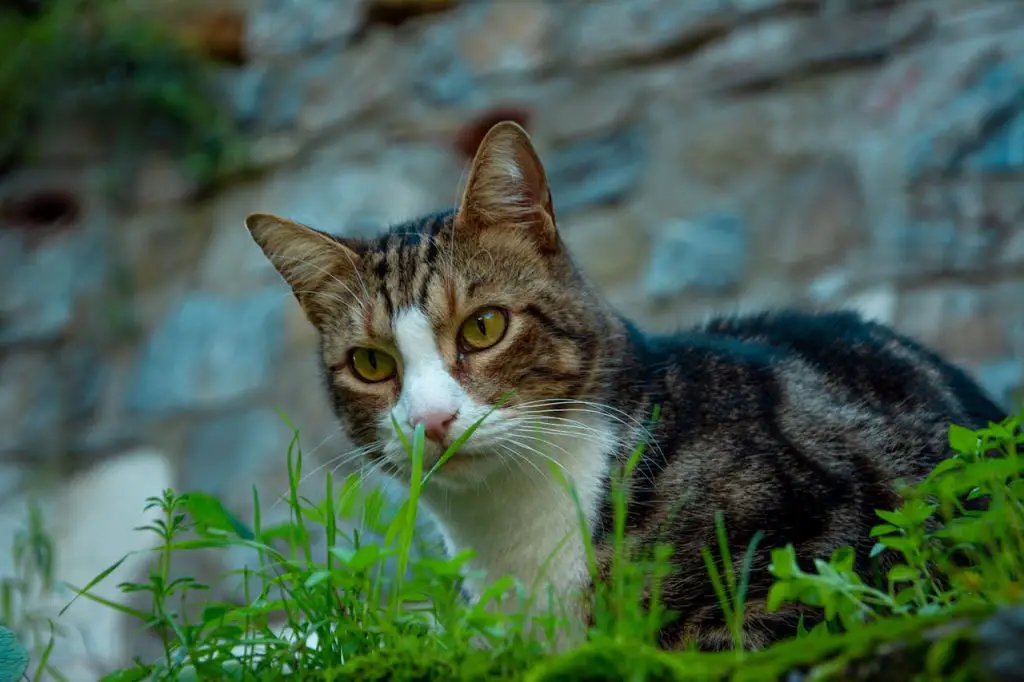
Proper shading is vital for maintaining your cat’s thermal regulation, especially during hotter months.
When selecting canopy materials, opt for UV-resistant fabrics, which effectively block harmful rays while allowing air circulation.
Materials such as polyethylene or acrylic are highly recommended due to their durability and weather-resistant properties.
Awning styles vary, so choose one that complements your yard’s layout and your cat’s habits. Retractable awnings offer flexibility, allowing you to adjust the shaded area based on the sun’s position.
Fixed awnings, on the other hand, provide constant coverage and can be anchored to existing structures like fences or house walls.
Additionally, consider freestanding canopies if you prefer a more versatile solution that can be relocated as needed.
Ensuring your cat has access to shaded areas isn’t just about comfort but also about preventing heat-related illnesses such as heatstroke.
By carefully selecting appropriate canopy materials and awning styles, you create a safer, more enjoyable outdoor environment for your feline friend.
This proactive measure greatly enhances your cat’s welfare and overall quality of life. See also How to Take Care of a Pomeranian Puppy.
Add Climbing Structures
Incorporating climbing structures in your yard provides essential physical and mental stimulation for your cat while guaranteeing their safety.
Cats naturally love to climb, and installing cat trees and climbing shelves can help them satisfy this instinctual behavior.
These structures not only engage their muscles but also offer a vantage point to observe their territory, reducing stress and increasing overall well-being.
To effectively add climbing structures, consider the following:
- Cat Trees: Place durable, weather-resistant cat trees in your yard. These should be sturdy enough to withstand outdoor conditions and provide multiple levels for your cat to explore.
- Climbing Shelves: Attach climbing shelves to fences or walls. Ascertain these shelves are securely mounted and spaced appropriately to encourage vertical movement.
- Natural Elements: Utilize existing trees or install logs and branches. Confirm they’re safe and free from sharp edges or toxic plants.
- Safety Measures: Regularly inspect all climbing structures for wear and tear. Replace any damaged parts to prevent accidents.
Provide Fresh Water
Guaranteeing your cat has access to fresh water at all times is vital for their hydration and overall health. Cats are prone to dehydration, which can lead to urinary tract issues and kidney problems.
By strategically placing multiple water sources throughout your yard, you can encourage your cat to drink more frequently.
Hydration stations should be easily accessible and located in shaded areas to keep the water cool.
Consider using ceramic or stainless steel bowls, as these materials are less likely to harbor bacteria compared to plastic. Additionally, elevated water dishes can prevent contamination from dirt and debris.
If you have a larger yard, setting up several hydration stations guarantees your cat always has a nearby water source. To further entice your cat to drink, you could install a pet water fountain.
The continuous flow of water often attracts cats and promotes increased water intake.
Make sure to clean and refill all water sources regularly to maintain their freshness and safety. Monitoring your cat’s water consumption can also provide early signs of potential health issues.
Frequently Asked Questions

To keep neighborhood cats out, utilize feline deterrents like motion-activated sprinklers or ultrasonic devices. Install outdoor barriers such as cat-proof fencing. Ascertain humane, non-harmful methods to protect both your property and the animals’ welfare.
To deter cats from digging, use natural repellents like citrus peels or coffee grounds. Install garden barriers such as chicken wire or motion-activated sprinklers. These methods are humane and effective in maintaining garden integrity.
Why not consider toys designed for outdoor catnip and interactive playtime? They’ll keep your feline entertained and mentally stimulated. Opt for durable, weather-resistant options to guarantee they withstand the elements and provide long-lasting enjoyment.
To encourage your cat to use a designated outdoor bathroom, place a litter box in a quiet, accessible area. Make certain it’s cleaned regularly and use familiar litter. Gradually shift by mixing outdoor soil with the litter.
So, you think your feline deserves a cat utopia? Opt for cat-safe plants like catnip and lemon balm. Integrate outdoor cat shelters. This not only enriches their environment but also guarantees their safety and well-being.
Conclusion
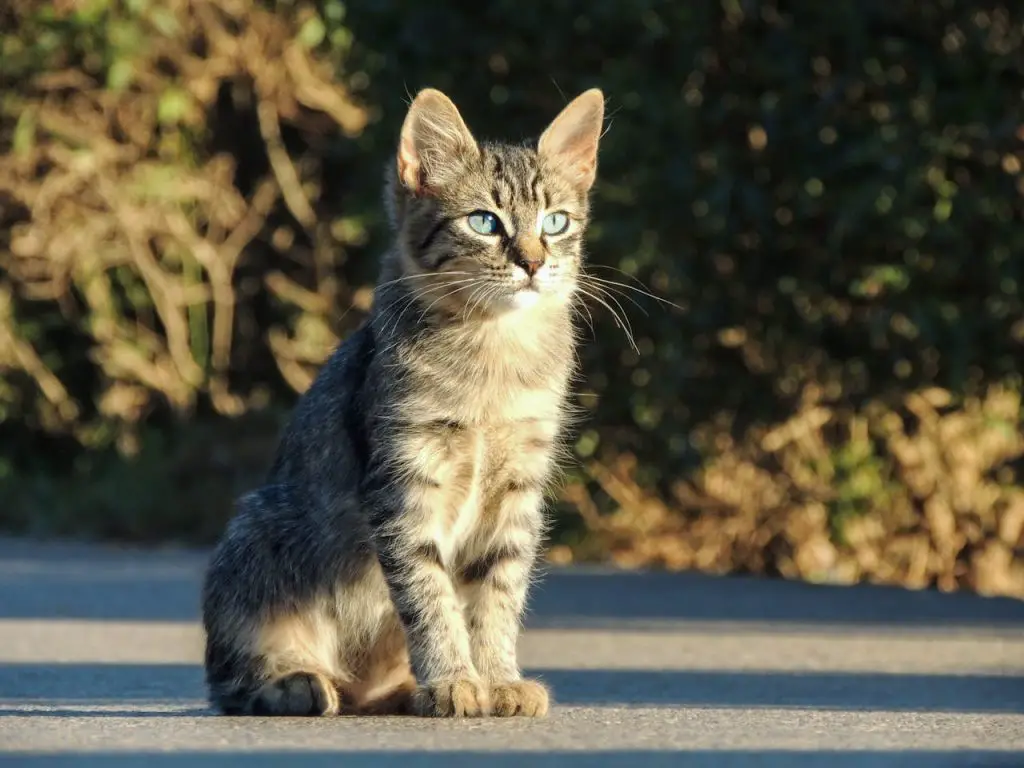
By implementing these strategies, you’ll transform your yard into a feline paradise.
Think of it as building a fortress, ensuring your cat’s safety while letting them explore to their heart’s content.
Your yard will become not just a playground, but a sanctuary.
So, take these steps; your furry friend will thank you with purrs and playful antics.
Remember, a cat-proof yard isn’t just about barriers—it’s about creating a world where your cat can thrive.
